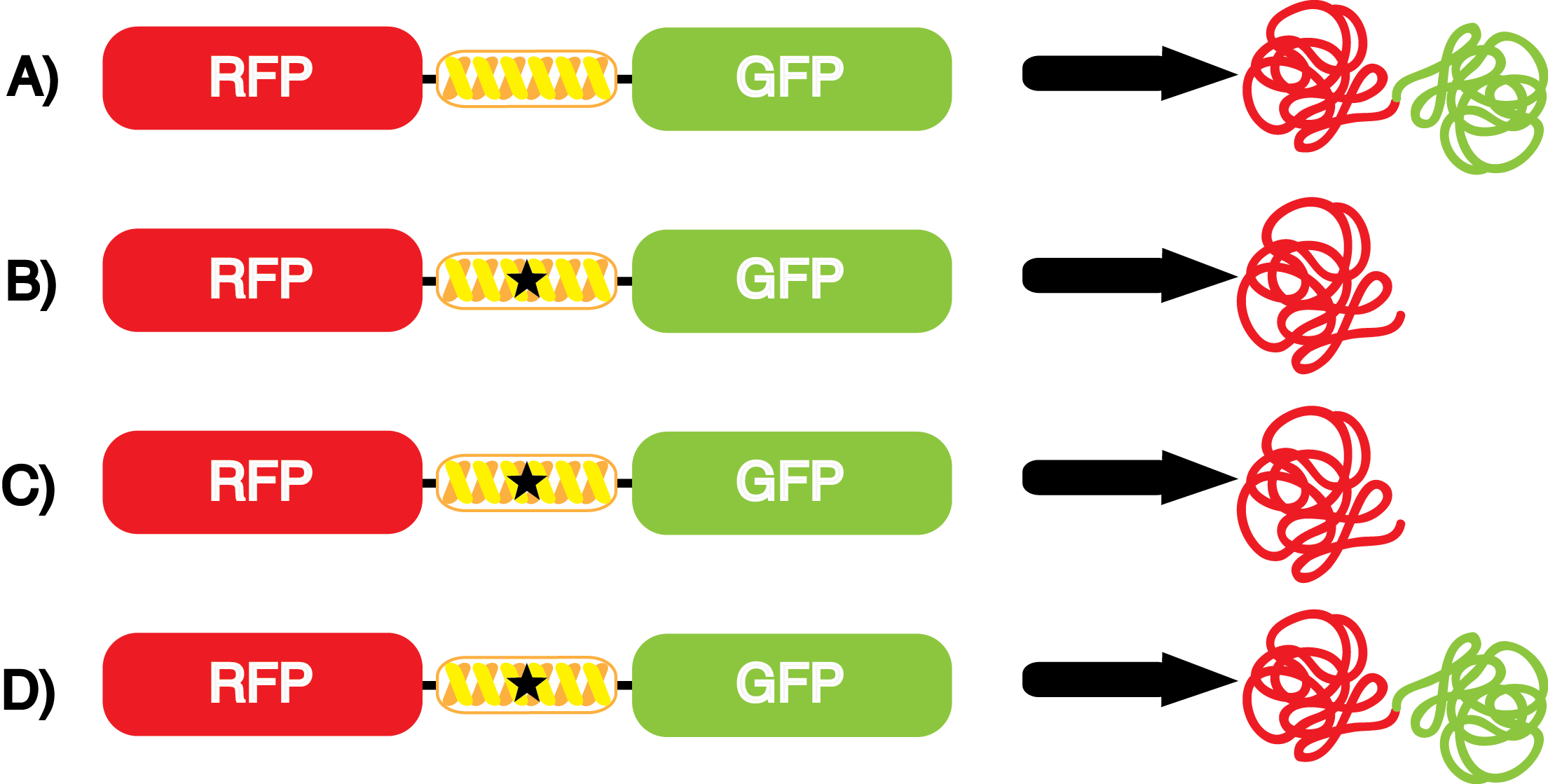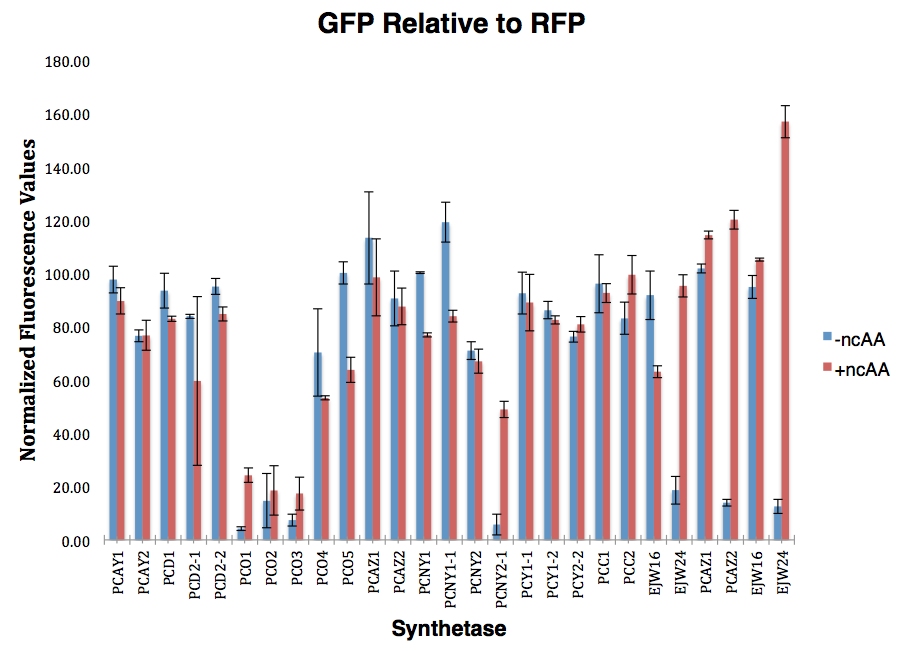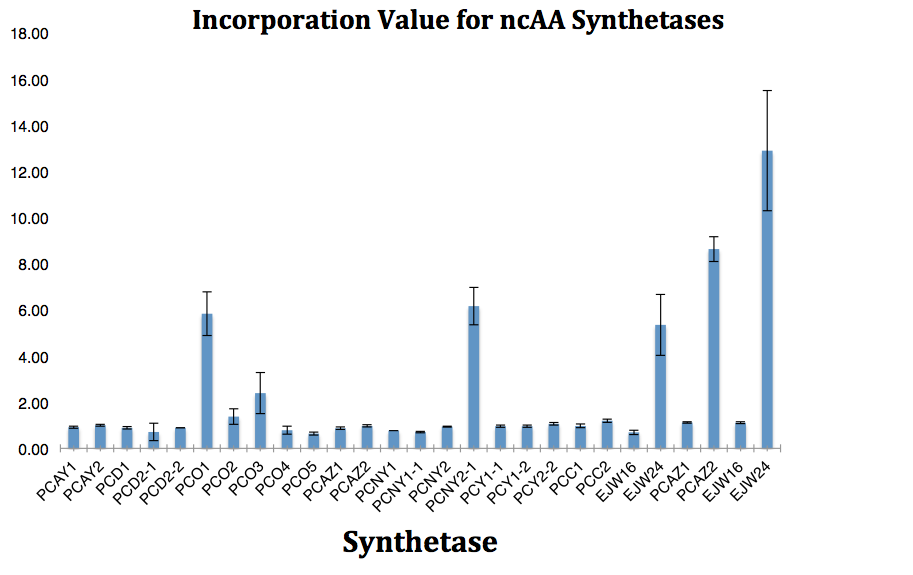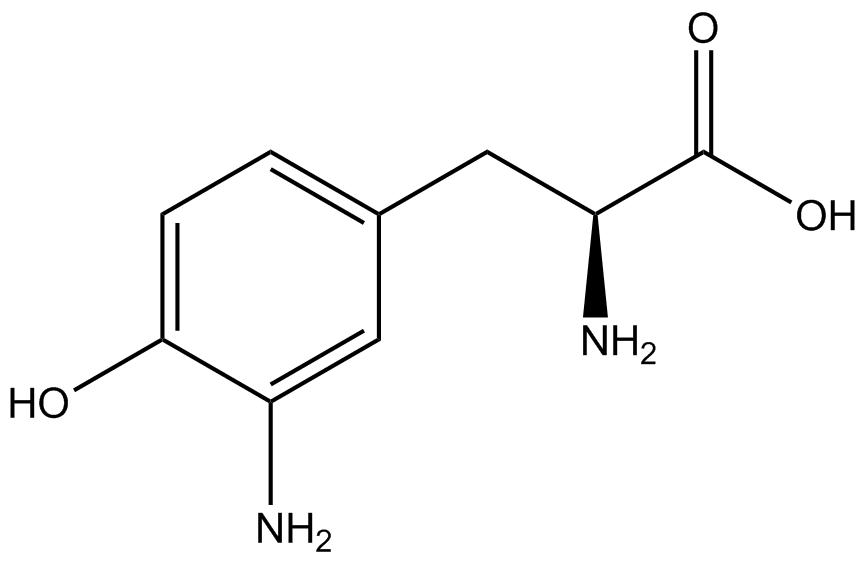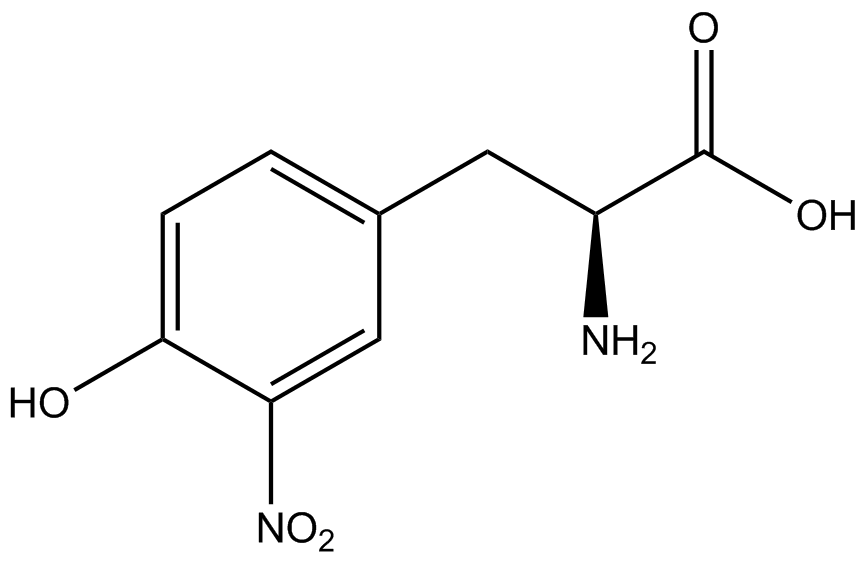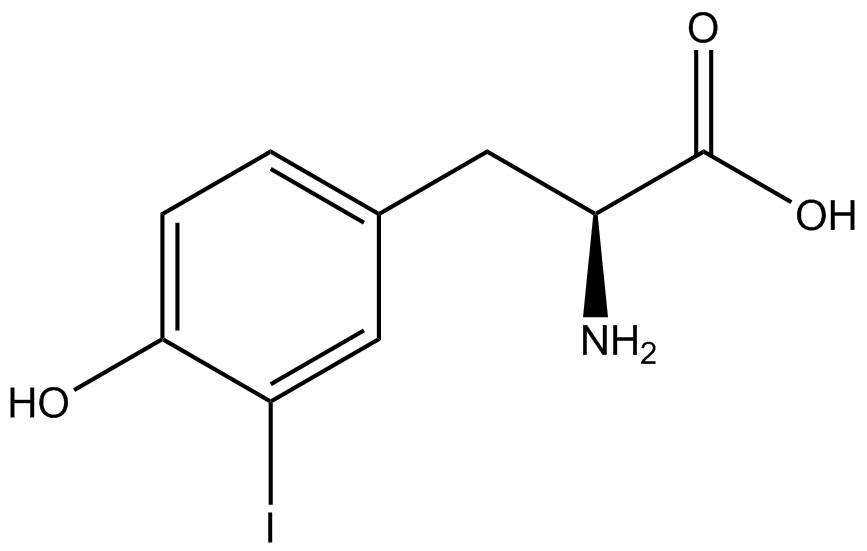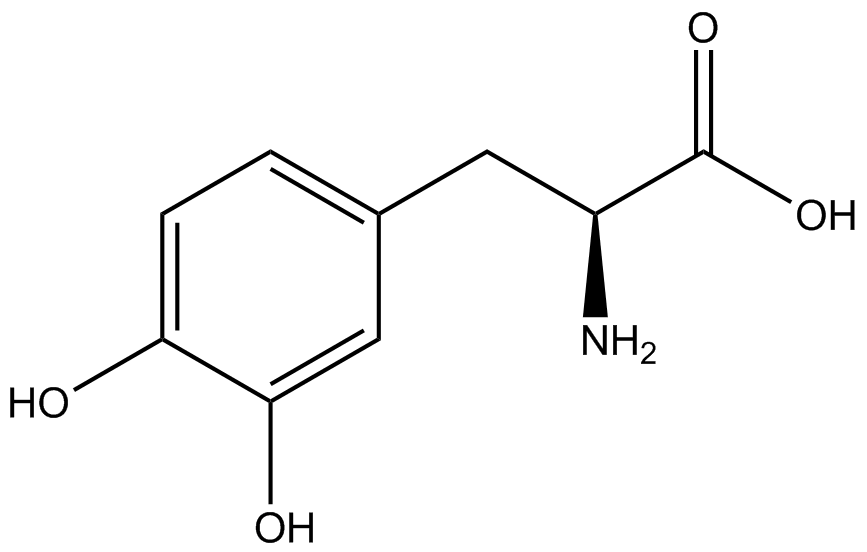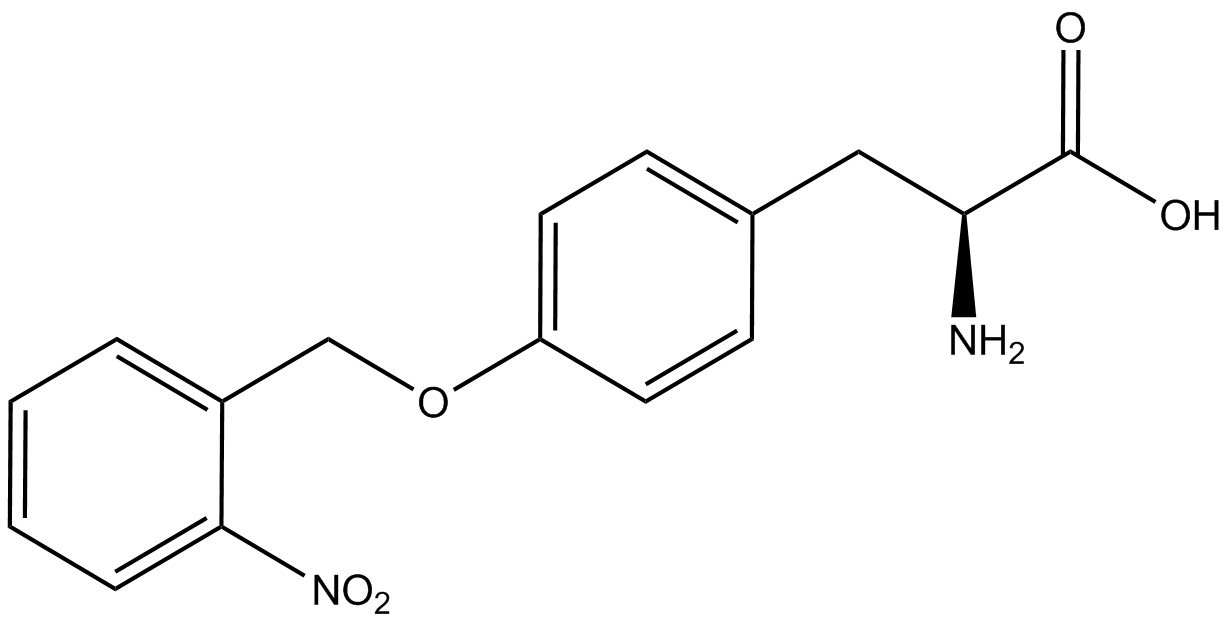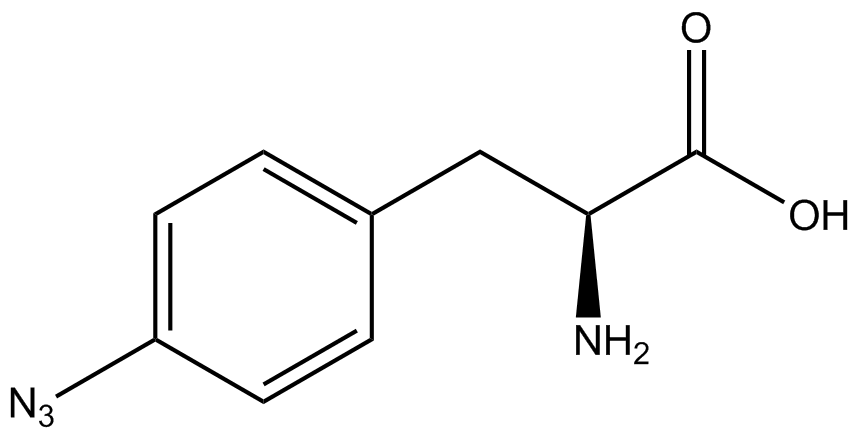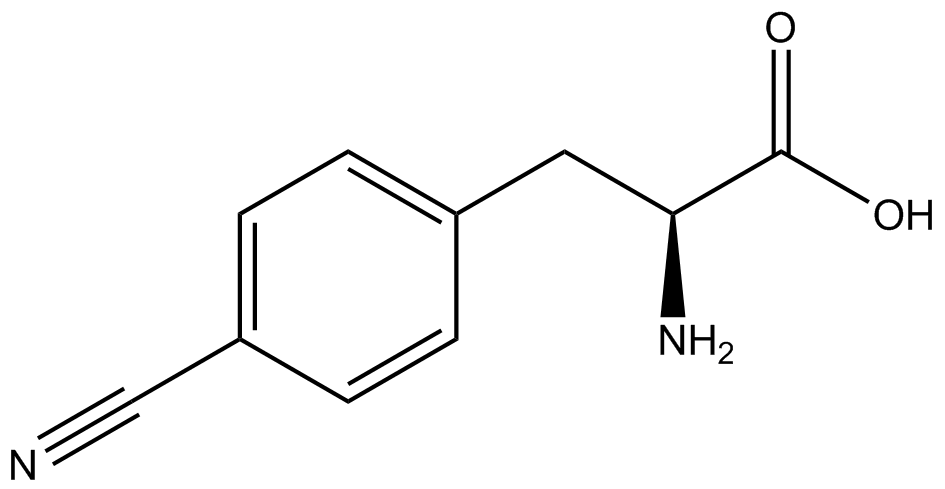Team:Austin Texas/kit
From 2014.igem.org
(→Results and Data) |
(→Results and Data) |
||
| Line 163: | Line 163: | ||
In the absence of a non-cannonical only GFP should be translated. Translation is expected to terminate at the linker sequence between GFP and RFP on pFRY due to the presence of an amber stop codon (UAG). Alternatively, translation should continue through the linker in the presence of a certain non-cannonical due to its incorporation at UAG. In this case, GFP and RFP should be translated. The fluorescence of RFP and GFP is detectable with fluorometer. | In the absence of a non-cannonical only GFP should be translated. Translation is expected to terminate at the linker sequence between GFP and RFP on pFRY due to the presence of an amber stop codon (UAG). Alternatively, translation should continue through the linker in the presence of a certain non-cannonical due to its incorporation at UAG. In this case, GFP and RFP should be translated. The fluorescence of RFP and GFP is detectable with fluorometer. | ||
| + | |||
| + | |||
Cultures containing control plasmids (pFRYC) and experimental plasmids (pFRY) were compared to evaluate the ncAA incorporation by each synthetase/tRNA pair (pStG). Each strain was grown in the presence and absence of the appropriate non-cannonical amino acid. The fluorescence of RFP and GFP readings of each culture were recorded at a culture density of 0.5 OD 600. The ratio of GFP to RFP fluorescence of each culture was calculated and compared between cultures grown in the presence of ncAA and cultures grown in the absence of ncAA. | Cultures containing control plasmids (pFRYC) and experimental plasmids (pFRY) were compared to evaluate the ncAA incorporation by each synthetase/tRNA pair (pStG). Each strain was grown in the presence and absence of the appropriate non-cannonical amino acid. The fluorescence of RFP and GFP readings of each culture were recorded at a culture density of 0.5 OD 600. The ratio of GFP to RFP fluorescence of each culture was calculated and compared between cultures grown in the presence of ncAA and cultures grown in the absence of ncAA. | ||
Revision as of 20:40, 14 October 2014
|
 "
"


